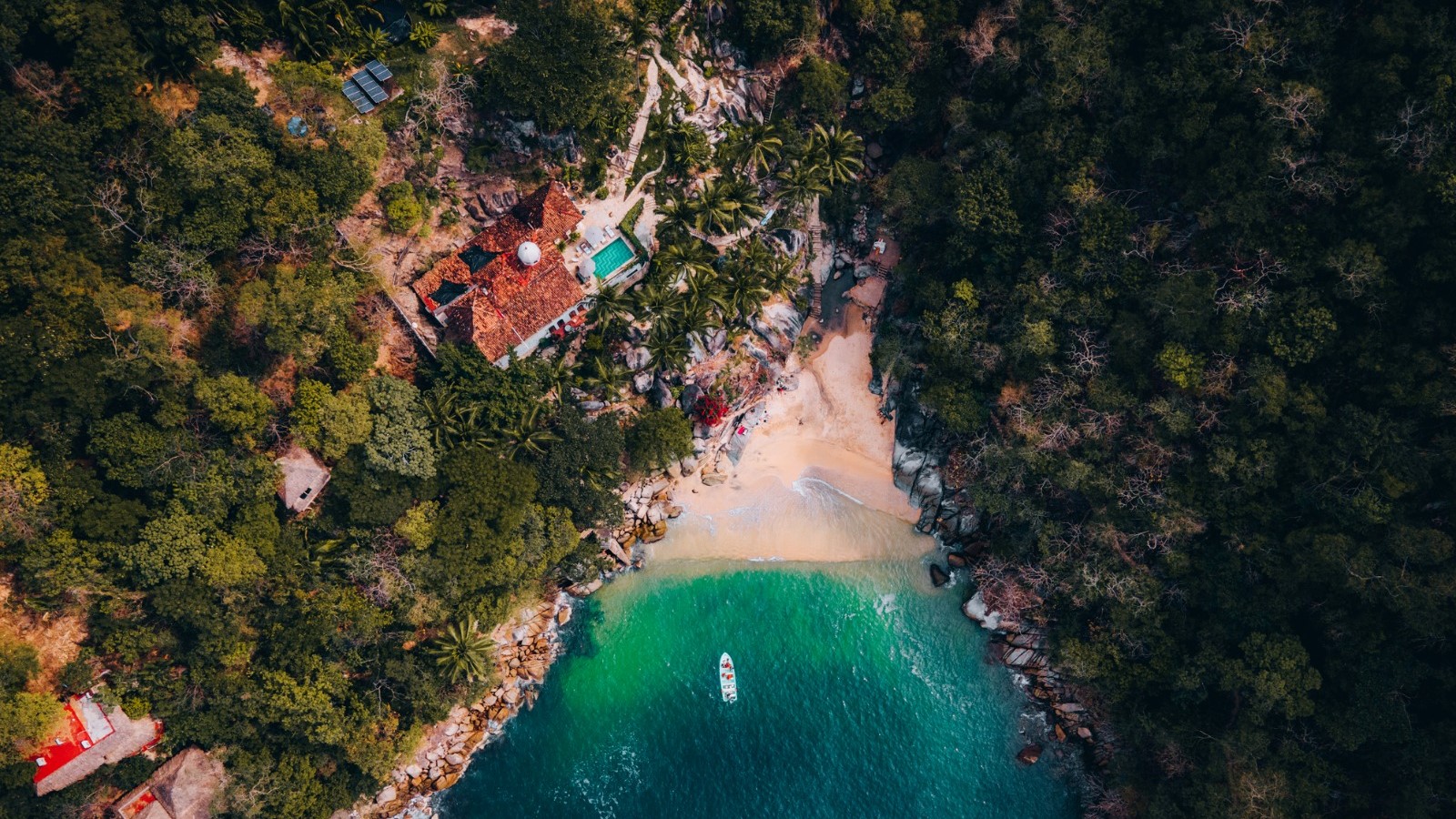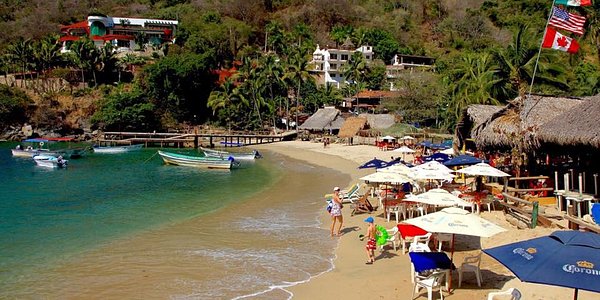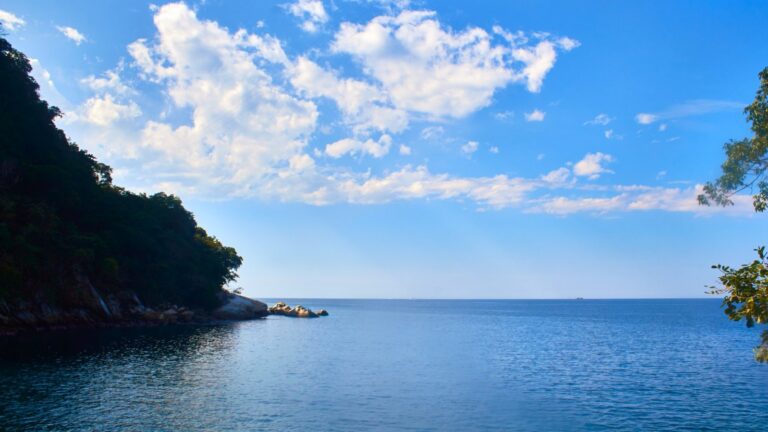
Colomitos – The Enchanting Cove

By Paco Morás
May 29, 2023
Located on the south side of the Banderas Bay, Colomitos still remains undiscovered by most. This beautiful little cove is a real treasure and well worth the hike to get there. In fact, the hike is easy enough for anyone to enjoy.
Nestled in a valley within the Sierra Madre mountains, with a little creek of fresh water trickling in the background (during the rainy season), this cove offers good snorkeling and is a perfect place to swim or just relax on the beach.
How to get there
To get there, you must first pass through Boca de Tomatlán where the Horcones River flows into the bay. This typical Mexican fishing village lays on the banks of this river since around 70 or 80 years ago and is home to a little over a thousand residents.
The river also divides this town into two municipalities; about 300 residents of Boca de Tomatlan are on the Cabo Corrientes’ municipal side while 650 reside on the Puerto Vallarta side. Its population consists mostly of native Mexicans but a few foreigners have also adopted this charming town and now live there year round.
 Near the entrance of the bay, the Horcones River is often shallow enough to be crossed by foot but a bridge is available to those who prefer not to get their feet wet. The hike to Colomitos lasts from half an hour to 45 minutes, depending on your pace, and will take you through an interesting diversity of vegetation. The most pleasing bird songs and a multitude of colorful butterflies will accompany you along the way.
Near the entrance of the bay, the Horcones River is often shallow enough to be crossed by foot but a bridge is available to those who prefer not to get their feet wet. The hike to Colomitos lasts from half an hour to 45 minutes, depending on your pace, and will take you through an interesting diversity of vegetation. The most pleasing bird songs and a multitude of colorful butterflies will accompany you along the way.The path follows the coastline at the bottom of the Sierras and passes under the canopy of beautiful Plumerias, Palms, Possum Wood trees and Strangling Ficuses. Occasionally, iguanas can be seen running across the path or sunning themselves on a rock nearby.
Unique fauna
Inhabiting the lower regions of these mountains, just to name a few, are red foxes, armadillos, skunks, raccoons, lizards and mountain crabs. In the higher ranges, still untouched by humans, jaguars, ocelots and military macaws reside in peace. Along this path, you may witness termite nests of impressive size, the unique and precarious looking nest of the yellow-winged cacique and maybe even a blue dragonfly.

Once at Colomitos, it’s a good idea to snorkel first as the water is clearer in the early hours of the day. Amongst the many colorful tropical fishes found in that area are the king angels, the panamic sergeant majors, the rainbow wrasses, the spotted oxfish whose young ones are a sight to behold, the giant damselfish, the reef cornetfish, some puffer fish, and the occasional eel. Of course, many more can be seen but the list would be too long if we named them all.
And corals!
Gorgonian coral, elegant coral, sea fans and encrusting stony coral also grow there. As coral is very fragile and some types of coral can take up to 10 years to grow an inch long, it is important not to touch them. The tip of a finger can destroy millions of microscopic organisms which are necessary to the growth of coral and the survival of many other species.
The most common mistake occurs when treading water in an upright position where the fins scrape the surface of the rocks below. For this reason, get into the habit of looking below you to make sure there is sufficient space before switching to an upright position.
The small beach of Colomitos offers soft sand and presents a perfect opportunity to catch a few rays. Don’t forget your sunscreen or you’ll end up looking like the red paper tree, affectionately called by locals “the tourist tree” for its peeling red bark.
More Things To Do
------ADVERTISEMENT------
------ADVERTISEMENT------
------ADVERTISEMENT------
------ADVERTISEMENT------


